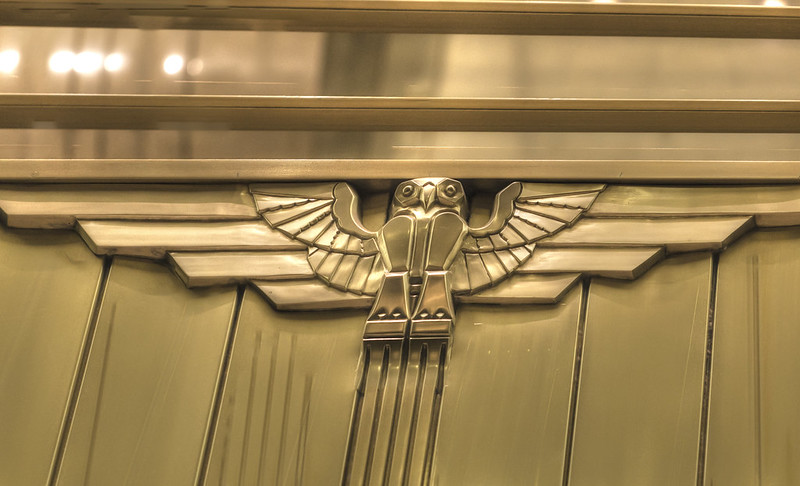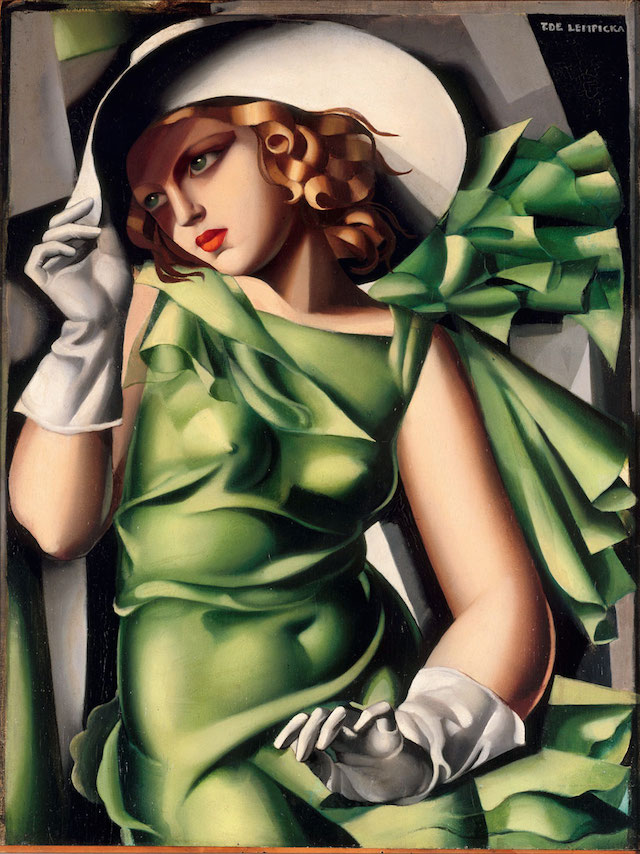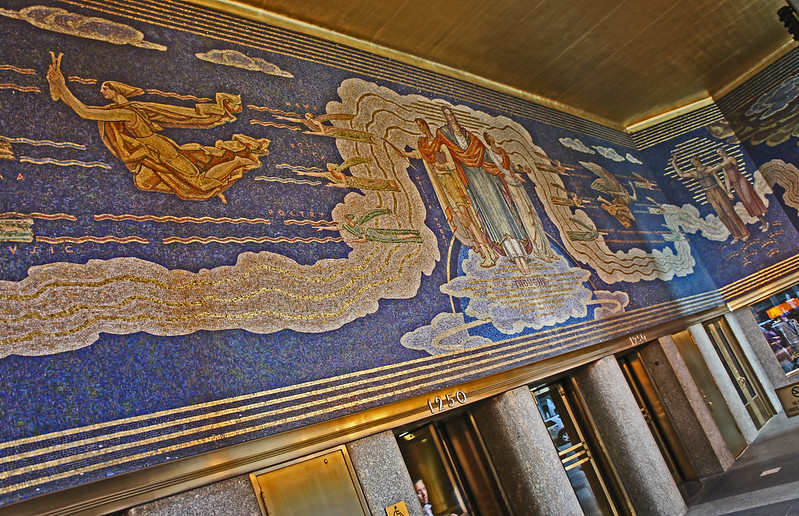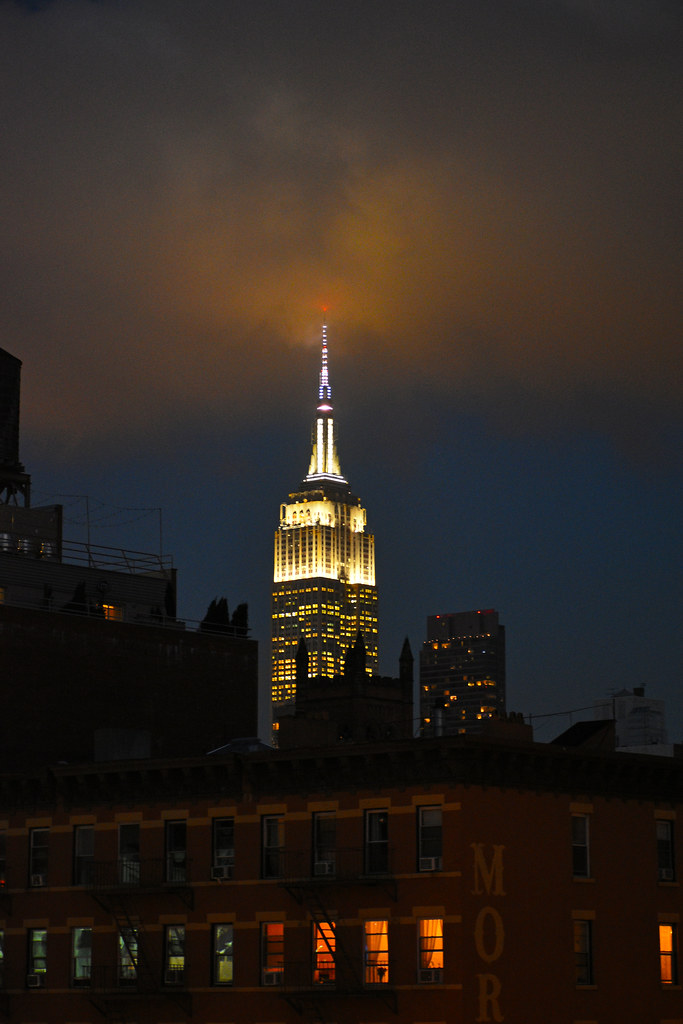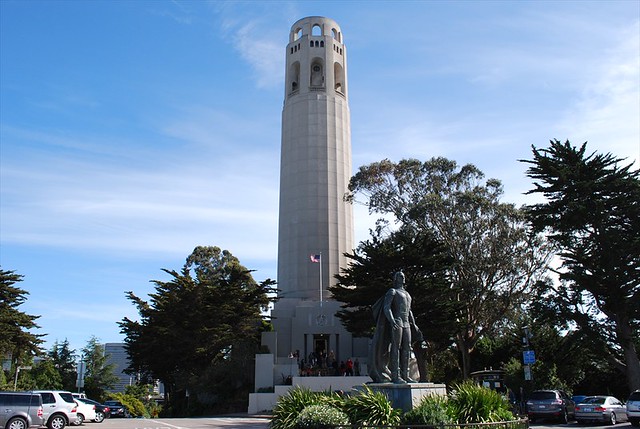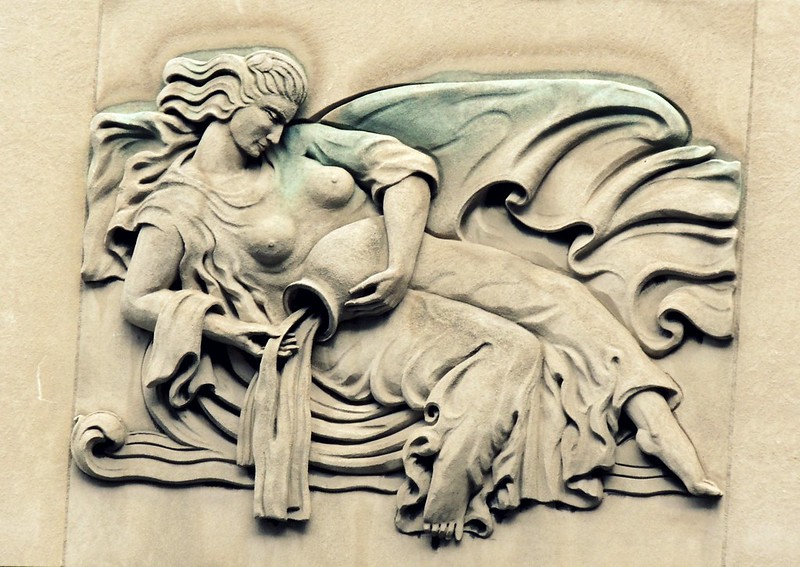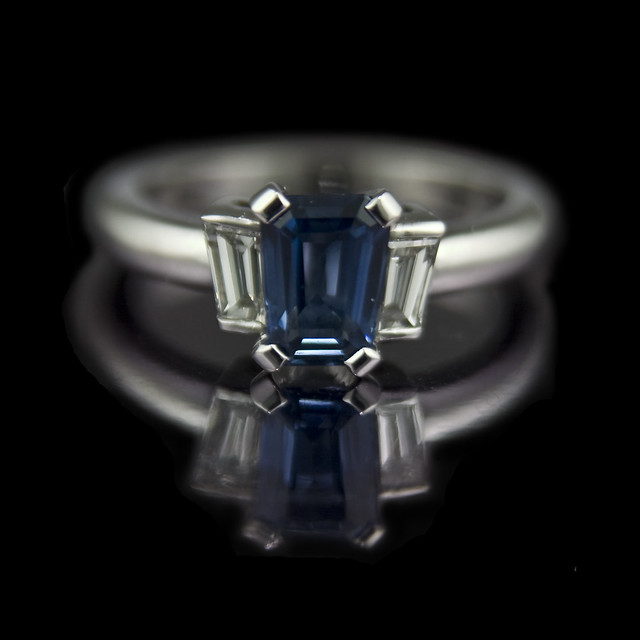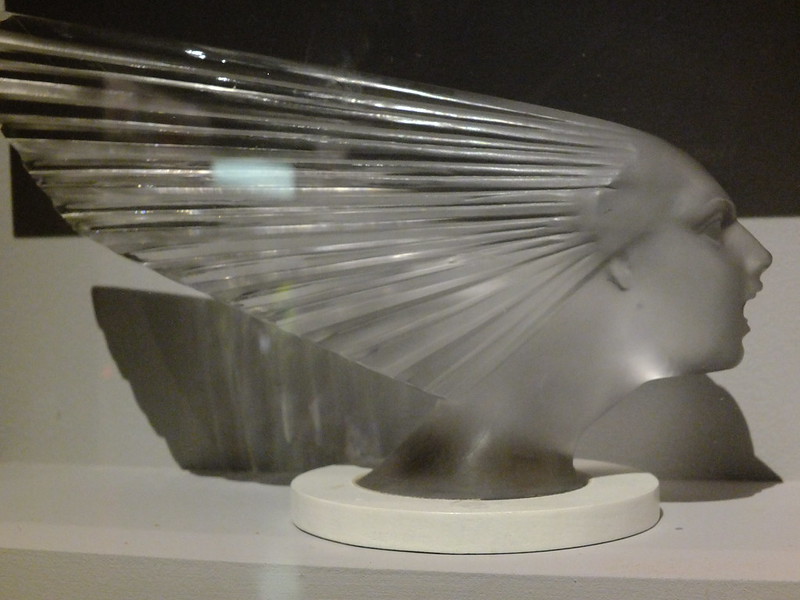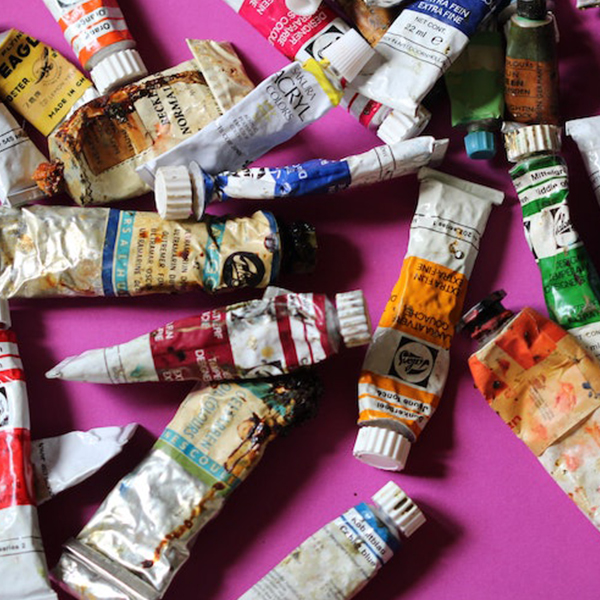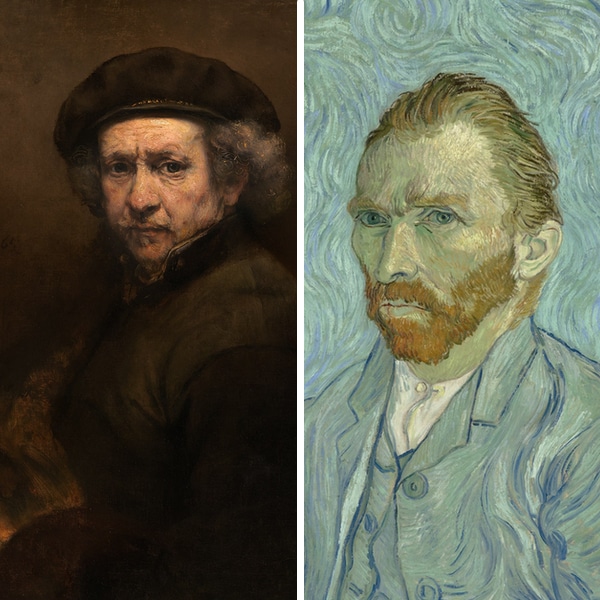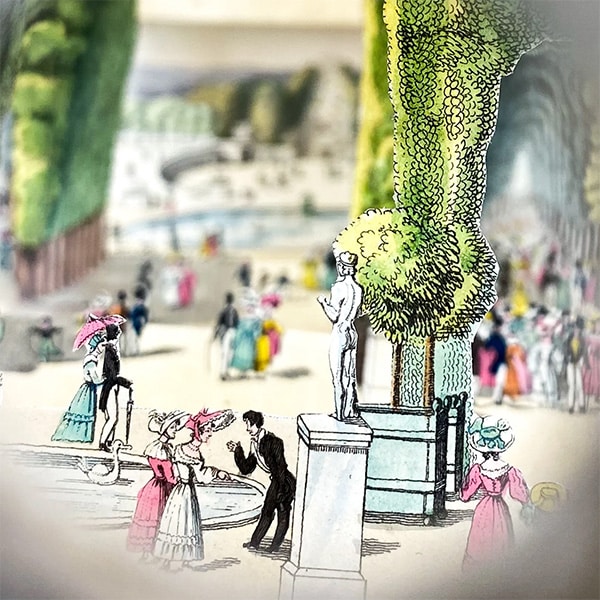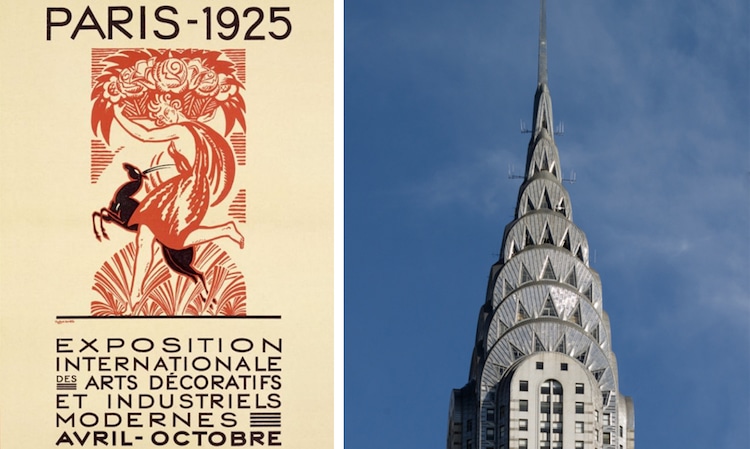
Like many 20th-century movements, Art Deco is celebrated for its undeniable impact on the Modern Art movement. Unlike many other styles of art, however, Art Deco conveys an eclectic range of inspiration, from age-old antiquities to contemporaneous genres. Ironically, by combining such an array of influences, artists working in this style crafted a one-of-a-kind movement that appeared to be entirely original.
Here, we present the ins and outs of the iconic movement, exploring the avant-garde art, exquisite architecture, and dazzling design that have been boldly defined for nearly a century.
What is Art Deco?
Art Deco is a modernist movement that emerged in 1920s Europe. While many different aesthetics compose the movement—including different color palettes and a range of materials, from ebony and ivory to wood and plastic—it is most frequently characterized by streamlined, geometric forms contrasted by rich ornamentation and linear decoration.
History
While hints of Art Deco popped up in pre-World War I France, it became an international art movement around 1925. Initially known as Style Moderne, it was noted for its avant-garde and elegant aesthetic. It gained particular prominence and popularity during the Exposition Internationale des Arts Décoratifs et Industriels Modernes, or The International Exhibition of Modern Decorative and Industrial Arts, which heavily featured this exciting new style.
Shortly after the groundbreaking exposition, the snazzy style made its way to America, where it was embraced by artists and architects alike—particularly, in buzzing New York City. While it remained popular in both Europe and America throughout the 1930s, the style abandoned its Arts and Crafts roots for a sleeker look during the Great Depression.
Art Deco Design
In addition to the Arts and Crafts movement, Art Deco was influenced by a wide range of modern styles, like Cubism, Futurism, and Fauvism. It also appropriated elements from ancient Egyptian and Aztec art, and often conveyed an interest in Classical sculpture.
Like Art Nouveau and Bauhaus, Art Deco design was not limited to fine arts; it was also a prevalent style of architecture and the applied arts.
Paintings
Paintings produced in the Art Deco style typically feature bold forms and busy compositions. Some, like those by Polish-born painter Tamara de Lempicka, depict dynamic portraits of stylish subjects. Typically, these figures are dressed in bright colors and set in abstracted metropolitan locations.
Murals
In addition to traditional paintings on canvas, many American Art Deco artists produced murals throughout the 1930s and into the 1940s. These large-scale pieces were commissioned through the Federal Art Project of the Works Progress Administration, a New Deal program, and were intended as a means of ensuring employment for artists.
Sculptures
Sculptures made in the Art Deco style were oftentimes small and made of precious materials like ivory, onyx, alabaster, and gold leaf. Like other artworks made during this time, it featured smooth dynamic lines, which were oftentimes used to represent dancers and elegant female figures.
Architecture
On top of murals, Art Deco in America materialized as sensational skyscrapers. These glistening buildings captured the glitz and glamor of the movement through geometric designs, streamlined silhouettes, and ornamental accents like relief carvings.
Applied Arts
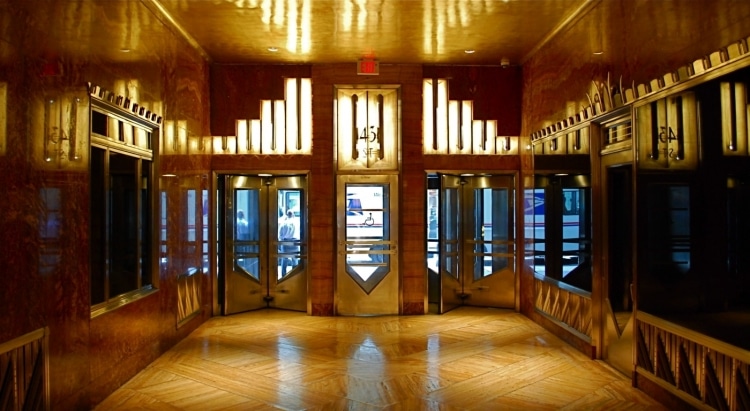
Photo: Tony Hisgett via Wikimedia Commons, CC BY-SA 2.0
While many movements simply manifest through fine art and architecture, the Art Deco aesthetic is evident in a range of other artistic genres.
Interiors rendered in the Art Deco style often feature reflective surfaces, sleek light fixtures, a minimal color scheme, and modern furniture.
Similarly, art deco jewelry makes a statement through linear designs and the use of luxurious materials, like shiny metals and stones.
Finally, the Art Deco style is also apparent in everyday objects—including wares, like this vase designed by French designer René-Jules Lalique—of the period, which were designed with form and function equally in mind.
Influence
Today, Art Deco is celebrated for its numerous contributions to modern art and design. Nearly 100 years after its glamorous golden age, many artists, architects, and other makers continue to work in this style, proving the timelessness of its iconic aesthetic.
Frequently Asked Questions
What is the style of Art Deco?
Art Deco is a modernist movement that emerged in 1920s Europe.
What were the main characteristics of Art Deco?
Art Deco is most frequently characterized by streamlined, geometric forms contrasted by rich ornamentation and linear decoration.
What time period is Art Deco?
While hints of Art Deco popped up in pre-World War I France, it became an international art movement around 1925.
This article has been edited and updated.
Related Articles:
Parisian Hotel Revives the Roaring 20s with Snazzy Art Deco Interiors
3D-Printed Bulbshades Inspired by Art Deco-Style Skyscrapers
Paris Apartment Looks Exactly Like a Wes Anderson Film Inside (and It’s For Sale)

